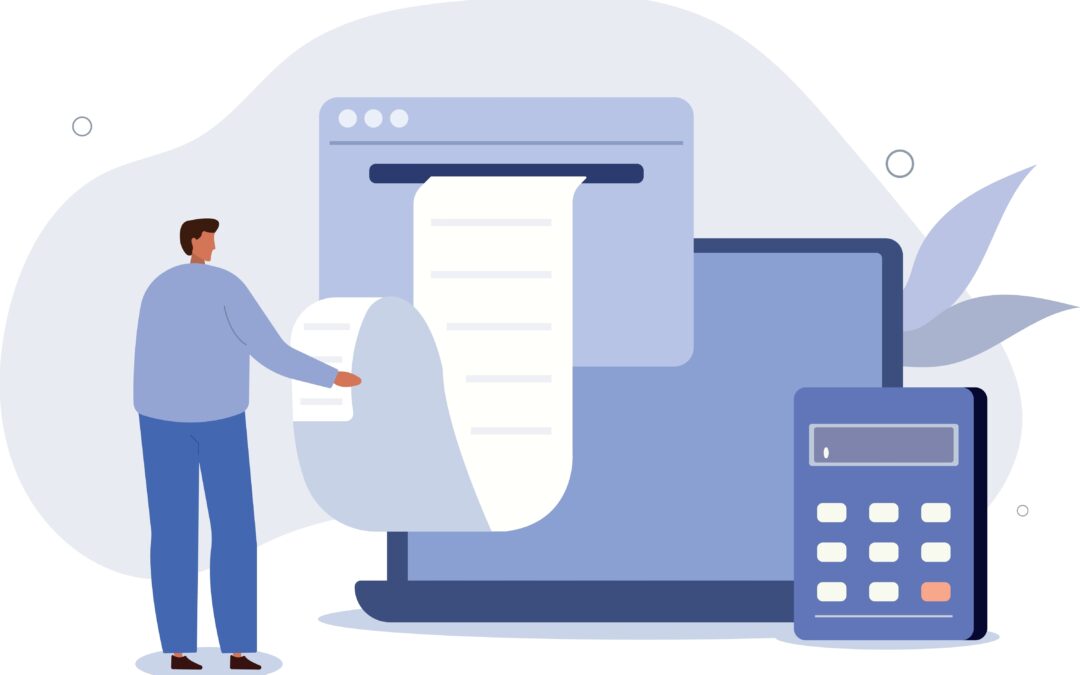
Jun 6, 2023 | Company Culture
Did you know that burnout costs businesses an estimated $125 billion to $190 billion in healthcare spending each year? With work-related stress and exhaustion on the rise, it’s crucial for companies to prioritize employee well-being and combat the burnout epidemic. In this blog post, we will explore practical solutions and effective strategies to create a happier and healthier workplace, promoting productivity and employee satisfaction.
In today’s fast-paced and demanding work environments, burnout has become a prevalent issue affecting employees across industries. The negative impact of burnout not only affects individuals’ mental and physical health but also hampers productivity, engagement, and overall organizational success. As an HR and Payroll software company, we understand the importance of addressing this critical challenge and supporting companies in building resilient and thriving workforces. In this article, we will delve into the topic of burnout, its causes, and most importantly, practical solutions to alleviate and prevent burnout in your workplace.
In this comprehensive guide, we will explore the burnout epidemic and provide you with practical solutions to create a happier and healthier workplace. From identifying burnout symptoms to implementing strategies for prevention and intervention, we aim to equip you with the knowledge and tools necessary to combat burnout and promote employee well-being.
Understanding Burnout: Identifying the Symptoms
Burnout is not just a momentary feeling of exhaustion or stress; it is a state of chronic physical and emotional depletion resulting from prolonged work-related stress. By recognizing the signs of burnout, you can take proactive measures to address it effectively. Some common symptoms include persistent fatigue, decreased motivation, increased cynicism or negativity, reduced productivity, and physical symptoms like headaches or insomnia. By regularly assessing employee well-being and monitoring these signs, you can intervene early and prevent burnout from escalating.
Addressing the Root Causes: Promoting Work-Life Balance
To combat burnout, it is essential to address its root causes. One major contributor to burnout is the imbalance between work and personal life. Encourage your employees to establish healthy boundaries and prioritize self-care. Promote work-life balance by offering flexible work arrangements, implementing clear policies around overtime and workload management, and fostering a supportive company culture that values employee well-being.
Creating a Supportive Work Environment: Communication and Collaboration
Building a supportive work environment is crucial in preventing burnout and promoting overall employee engagement. Encourage open communication and create channels for employees to express their concerns and seek support. Implement regular check-ins, one-on-one meetings, and team-building activities to foster a sense of connection and camaraderie. By creating a culture of collaboration and support, you can help employees feel valued, heard, and motivated to perform their best.
Empowering Employees: Providing Opportunities
Empowering employees with the necessary resources, tools, and development opportunities can help prevent burnout. Provide access to training programs, workshops, and skill-building initiatives that enhance job satisfaction and foster professional growth. Additionally, consider implementing employee assistance programs, wellness initiatives, and stress-management workshops to support employees in managing their overall well-being.
Recognizing Accomplishments: Boosting Morale and Engagement
Recognizing and celebrating accomplishments is vital in promoting a positive work environment and preventing burnout. Implement regular employee recognition programs to acknowledge and reward hard work, milestones, and achievements. Celebrating successes not only boosts morale but also reinforces a culture of appreciation and inspires employees to continue striving for excellence.
Key Takeaways Summary
- Identifying the signs of burnout, such as persistent fatigue and decreased motivation, allows for early intervention and prevention.
- Encourage employees to establish healthy boundaries and prioritize self-care, offering flexible work arrangements and clear policies on workload management.
- Create open channels of communication, regular check-ins, and team-building activities to cultivate a culture of support and collaboration.
- Provide resources, training, and development opportunities to enhance job satisfaction and professional growth.
- Implement recognition programs to boost morale and reinforce a culture of appreciation, inspiring employees to excel and preventing burnout.
The burnout epidemic poses significant challenges for both employees and organizations. By proactively addressing burnout and implementing practical solutions, you can create a happier and healthier workplace that promotes employee well-being.

May 31, 2023 | Company Culture
Did you know that organizations with a standardized onboarding process experience 54% greater new hire productivity and 50% higher retention rates? Onboarding is a critical step in the employee journey, and getting it right can make a significant impact on your business’s success. In this comprehensive guide, we’ll walk you through the essentials of onboarding and talent management, providing you with practical tips and strategies to ensure a seamless and effective onboarding experience for your new hires.
Welcoming new employees and integrating them into your organization smoothly is crucial for their engagement, productivity, and long-term success. Onboarding goes beyond just paperwork and orientation; it sets the stage for a positive employee experience right from the start. By implementing a well-structured onboarding process, you can build a strong foundation for a thriving workforce. This blog post will take you through the key components of onboarding, from pre-boarding to post-onboarding, and equip you with the knowledge to onboard like a pro.
In this comprehensive guide, we will delve into the world of onboarding, sharing industry best practices, practical tips, and real-life examples to help you create a memorable onboarding experience. From preparing before their first day to fostering long-term engagement, we’ll cover all the essential steps and strategies to optimize your onboarding process.
Pre-Boarding: Setting the Stage for Success
The pre-boarding stage is where you lay the foundation for a successful onboarding process. It’s essential to keep new hires informed and engaged before their first day. One effective strategy is to send them a welcome email that goes beyond the basic logistical information. In this email, provide a warm introduction to your company culture, values, and mission. Share stories or examples that illustrate what makes your organization unique and highlight any exciting initiatives or traditions that new hires can look forward to. This helps create a sense of anticipation and connection even before they officially start.
To ensure a smooth transition, it’s crucial to have their workspace ready and set up before they arrive. This includes preparing their computer, desk, and any necessary tools or equipment they’ll need to hit the ground running. This attention to detail shows your commitment to their success and makes them feel valued and supported from day one.
Another effective strategy is to introduce the new hire to the team before their arrival. Share their bio and photo with the existing team members, either through an email or on the company’s communication platform. This helps foster a sense of familiarity and encourages a warm welcome from colleagues. Consider going a step further and assign them a buddy or mentor who can guide them through their initial days. This designated support person can provide valuable insights, answer questions, and offer support as the new hire acclimates to their role and the company culture.
First Day: Making a Lasting Impression
The first day is a critical opportunity to make a lasting impression on new hires. It’s important to greet them with enthusiasm, warmth, and appreciation. A simple gesture like a friendly smile, a welcome gift, or a personalized note can go a long way in making them feel valued and excited about joining the organization.
Streamlining the paperwork process is another key aspect of a successful first day. Utilize digital onboarding tools to simplify and expedite the completion of necessary forms, policies, and procedures. This not only saves time but also ensures a smoother onboarding experience.
Take the time to walk new hires through your company’s policies, procedures, and benefits. Explain any important information, such as time off policies, insurance coverage, and performance expectations. This helps new employees feel confident and informed about what is expected of them.
Furthermore, use their first day to share your company’s mission, vision, and values. Emphasize the organization’s culture and the importance of teamwork and collaboration. Encourage interaction and engagement, allowing the new hire to ask questions, provide their perspective, and get to know their colleagues. This creates a sense of inclusion and sets the stage for building strong relationships within the team.
Training and Development: Equipping for Success
Comprehensive training and development play a crucial role in setting new hires up for success. Provide them with thorough training on their job responsibilities, systems, and tools. This training should cover both technical skills and company-specific knowledge. Offer hands-on learning opportunities, such as shadowing experienced team members or working on real-life projects. This practical experience allows new hires to apply what they’ve learned and gain confidence in their abilities.
Pairing new hires with mentors or experienced team members is another effective strategy. A mentor can provide guidance, answer questions, and offer support as the new hire navigates their role and the company culture. This mentorship relationship fosters a sense of belonging and accelerates the learning process.
Ongoing feedback and evaluation are crucial for continuous growth and improvement. Regularly check in with new hires to provide constructive feedback and praise for their accomplishments. This feedback loop helps them understand their strengths and areas for improvement, allowing them to excel in their role.
Post-Onboarding: Sustaining Engagement and Growth
Sustaining engagement and growth beyond the initial onboarding period is essential to retain top talent and foster a thriving work environment, especially in remote environments. Here are some key strategies for post-onboarding success:
Offer access to professional development resources, workshops, and online courses. Encourage employees to enhance their skills and knowledge by providing opportunities for continuous learning. This not only helps them grow professionally but also demonstrates your commitment to their long-term development.
Schedule follow-up meetings to assess the new hire’s progress and address any concerns or challenges they may be facing. These check-ins provide an opportunity to provide ongoing support, guidance, and feedback. It’s essential to show genuine interest in their experience and well-being, making them feel valued as integral members of the team.
In addition to regular check-ins, create a culture of open communication and encourage new hires to voice their opinions, ideas, and suggestions. This fosters a sense of ownership and involvement, allowing them to contribute meaningfully to the organization’s growth and success.
Acknowledging and celebrating achievements and milestones is crucial for maintaining morale and reinforcing a sense of belonging. Recognize their accomplishments publicly or privately, whether it’s completing a project, hitting a sales target, or reaching a specific milestone in their role. Small gestures like personalized notes or team celebrations can go a long way in boosting employee engagement and motivation.
Lastly, consider implementing employee engagement initiatives such as team-building activities, employee recognition programs, or wellness programs. These initiatives create a positive work environment, enhance team dynamics, and prioritize the well-being of your employees.
Key Takeaways Summary
-
Pre-boarding: Start the onboarding process before the new hire’s first day by communicating with them, preparing their workspace, and introducing them to the team. This helps create a positive and welcoming environment from the start.
-
First Day: Make a lasting impression by providing a warm welcome, streamlining paperwork with digital tools, and introducing the company’s culture and values. This sets the tone for the new hire’s experience and fosters a sense of belonging.
-
Training and Development: Equip new hires for success by providing role-specific training, mentorship, and coaching. Ongoing feedback and evaluation are crucial for their growth and development.
-
Post-Onboarding: Sustain engagement and growth by offering continuous learning opportunities, regular check-ins, and celebrating milestones. This keeps employees motivated and engaged in their roles.
Onboarding is an essential process for setting new hires up for success and creating a positive employee experience. By following the steps outlined in this comprehensive guide, you can onboard like a pro and build a strong foundation for your workforce. Remember, effective onboarding leads to higher productivity, increased retention rates, and a happier, more engaged workforce. So, invest the time and effort into creating a seamless and comprehensive onboarding experience—it will pay off in the long run. If you’re ready to take your onboarding process to the next level, reach out to our team to book a software demo and discover how our HRM software can streamline and enhance your onboarding journey.

May 22, 2023 | Compliance
Did you know that Federal Withholding Tax is a critical aspect of payroll management that affects every working American? In fact, according to the Internal Revenue Service (IRS), approximately 75% of taxpayers receive a tax refund each year, indicating the significant role of withholding tax in managing individual tax liabilities. Whether you’re an employer responsible for withholding taxes from your employees’ wages or an employee wanting to ensure accurate tax withholdings, understanding the ins and outs of federal withholding tax is essential.
What is Federal Withholding Tax?
At its core, Federal Withholding Tax refers to the money deducted from an employee’s paycheck by the employer to fulfill their federal income tax obligations. This pay-as-you-go tax system, mandated by the IRS, ensures that individuals contribute towards their federal tax liabilities throughout the year rather than paying a lump sum during tax season.
How Does Federal Withholding Tax Work?
The process of Federal Withholding Tax involves employers calculating the appropriate amount of federal income tax to withhold from each employee’s wages based on the information provided on the employee’s Form W-4. The Form W-4 includes details such as filing status, allowances, and any additional withholding instructions. Using IRS withholding tables, employers determine the precise amount to be withheld from each paycheck, helping employees meet their tax obligations.
Key Considerations for Employers
Accurate Employee Information: It is crucial for employers to emphasize the importance of accurate information on the employee’s Form W-4. Encourage employees to complete the form with precision and update it promptly whenever their personal or financial circumstances change. This ensures that the correct amount of federal income tax is withheld from their paycheck, preventing any discrepancies or issues.
Withholding Allowances: Employers play a significant role in helping employees understand the concept of withholding allowances. The number of allowances an employee claims on their Form W-4 directly affects the amount of federal income tax withheld from their wages. More allowances generally result in less withholding, while fewer allowances lead to higher withholding. By educating employees about this relationship, employers empower them to make informed decisions about their withholding preferences.
Additional Withholding: Employers should make employees aware of the option to request additional withholding if they anticipate owing more taxes or want to minimize their tax liability. This can be particularly useful for employees who have additional sources of income, such as freelance work or investment earnings. By understanding the process and benefits of additional withholding, employees can take proactive steps to manage their tax obligations effectively.
Tips for Employees
Complete Form W-4 Accurately: When filling out the Form W-4, employees should provide precise personal and financial information. This includes details like their name, Social Security number, filing status, and any additional withholding instructions. Accuracy in completing the form ensures that the correct amount of federal income tax is withheld from their paycheck, avoiding any potential under or over-withholding situations.
Update Form W-4 When Necessary: Major life events, such as getting married, having children, or experiencing changes in income, can impact an employee’s tax situation. It is crucial for employees to promptly update their Form W-4 whenever such events occur. By keeping the form up to date, employees can ensure that their withholding aligns with their current circumstances, preventing unnecessary tax surprises at year-end.
Understand the Impact of Allowances: Employees should be aware that the number of allowances claimed on their Form W-4 directly affects the amount of federal income tax withheld. Claiming more allowances generally reduces the amount withheld, while claiming fewer allowances leads to higher withholding. To determine the appropriate number of allowances, employees can consult resources provided by the IRS or seek professional advice, ensuring they optimize their withholding for their specific situation.
Key Takeaways
- Federal Withholding Tax is a crucial aspect of payroll management that affects every working American, with approximately 75% of taxpayers receiving a tax refund each year.
- Employees have the option to request additional withholding if they anticipate owing more taxes or want to minimize their tax liability.
- Employees should complete their Form W-4 accurately, promptly update it when necessary, and understand the impact of allowances on their tax withholding.
- Regular review of pay stubs and withholdings allows employees to ensure accuracy and make adjustments if needed.
- By complying with federal withholding tax requirements, employers avoid penalties, while employees ensure accurate and timely tax payments.
Federal withholding tax is a critical aspect of payroll management that both employers and employees should understand. By complying with federal withholding tax requirements, businesses can avoid penalties, while employees can ensure accurate and timely tax payments. Need more tax help? Check out our post on payroll tax compliance.

May 12, 2023 | Company Culture
Did you know that companies with highly engaged employees outperform their competitors by 147%? The remote work revolution has transformed the way we work, but it also presents unique challenges in keeping employees engaged and motivated. In this week’s HR and Payroll newsletter, we’ll unveil effective strategies for boosting employee engagement in a remote work environment. Discover how to harness the power of remote teams, increase productivity, and create a thriving virtual work culture that drives success.
As businesses adapt to the new normal of remote work, ensuring employee engagement has become a critical success factor. Engaged employees are not only more productive, but they also contribute to higher customer satisfaction and overall company growth. In this edition, we’ll share insights, practical tips, and strategies that will help you unlock the potential of your remote workforce and build a strong and engaged team.
We’ll explore effective strategies for boosting employee engagement in a remote work environment. From building a positive remote work culture to fostering work-life balance, leveraging technology, and measuring engagement, we’ll provide actionable advice to help you create an engaged and motivated remote workforce.
Building a Positive Remote Work Culture
To create a positive remote work culture, clear and effective communication channels are vital. Encourage regular team check-ins through video conferences or chat platforms to foster connection and alignment. Ensure that everyone is aware of project updates, goals, and expectations. In addition to work-related communication, encourage casual conversations to maintain a sense of camaraderie and build relationships within the team.
Recognizing and celebrating achievements is equally important in remote work environments. Acknowledge individual and team accomplishments publicly, such as through virtual shout-outs or dedicated channels. Consider hosting virtual team lunches or happy hours where employees can connect and share their successes. By celebrating milestones and accomplishments, you create a positive and supportive work environment that boosts employee morale and engagement.
Providing Opportunities for Growth and Development
Remote employees, like their office-based counterparts, are eager for growth and development opportunities. Offer virtual training programs and webinars that address their specific needs and professional goals. Provide challenging tasks and assignments that align with their skills and aspirations, allowing employees to stretch their abilities and gain new experiences. Regularly provide feedback on their performance and offer guidance for improvement and growth.
Consider implementing mentorship programs or pairing employees with experienced team members who can provide guidance and support remotely. By investing in your employees’ professional development, you demonstrate your commitment to their growth and create a culture of continuous learning. This not only enhances employee engagement but also helps retain top talent within your organization.
Fostering Work-Life Balance and Well-being
Maintaining a healthy work-life balance is crucial for remote employees. Encourage flexible work schedules that accommodate personal responsibilities and preferences. Set clear expectations regarding work hours and availability to avoid burnout and establish boundaries. Promote the importance of taking breaks throughout the day to recharge and prevent excessive screen time.
Support employee well-being by providing resources for mental health, such as access to virtual counseling or meditation apps. Organize wellness challenges that encourage physical activity and healthy habits. Consider implementing wellness initiatives, such as virtual fitness classes or health webinars, to promote a healthy lifestyle. By prioritizing work-life balance and well-being, you create an environment that values employees’ overall happiness and ensures they can perform at their best.
Enhancing Remote Team Building and Social Interaction
Building strong connections among remote team members is crucial for fostering engagement. Organize virtual team-building activities that encourage collaboration and teamwork, such as virtual scavenger hunts or team quizzes. Create dedicated chat channels or platforms where employees can engage in informal conversations, share ideas, or discuss non-work-related topics.
Consider implementing virtual coffee breaks or lunchtime chats where employees can socialize and get to know each other better. Encourage the use of video conferencing during meetings and brainstorming sessions to foster face-to-face interactions and build rapport. By nurturing a sense of community and social interaction, you create a supportive and connected remote team that is more engaged and motivated to collaborate effectively.
Leveraging Technology for Remote Engagement
Technology plays a crucial role in enabling remote employee engagement. Understanding how technology can benfit your business can be a daunting task, but once properly implemented it can revolutionize your workforce. Utilize collaboration tools and project management software to streamline communication, facilitate seamless workflow, and ensure transparency across teams. These tools provide a centralized platform for sharing files, assigning tasks, and tracking progress, enhancing efficiency and collaboration.
Implement virtual communication platforms effectively to ensure everyone stays connected. Encourage the use of video conferences for team meetings, one-on-one check-ins, and presentations to maintain a sense of connection and personal interaction. Explore innovative ways to connect and engage, such as virtual brainstorming sessions or online knowledge-sharing platforms, to encourage collaboration and the exchange of ideas.
Key Takeaways Summary
-
Clear communication channels, teamwork, and recognition are crucial for building a positive remote work culture.
-
Virtual training, challenging tasks, and regular feedback promote growth and development in a remote work environment.
-
Encouraging work-life balance, supporting well-being, and promoting breaks enhance employee engagement.
-
Virtual team-building activities and informal conversations foster remote team connections and social interaction.
-
Leveraging technology through collaboration tools and virtual communication platforms maximizes remote engagement.
Boosting employee engagement in a remote work environment requires intentional strategies and a people-centric approach. By implementing the strategies discussed in this newsletter, you’ll be on your way to creating a thriving virtual work culture that fuels productivity and success. Remember, engaged employees are more likely to go above and beyond, contribute innovative ideas, and stay committed to your organization’s goals.
In today’s fast-paced and ever-evolving business landscape, adapting to remote work is no longer an option but a necessity. By focusing on employee engagement, you can unlock the full potential of your remote workforce and create a competitive advantage.
Take your remote work engagement to the next level with our customized HRM software. Our powerful tools and features are designed to seamlessly manage your remote workforce, enhance communication, and boost employee engagement. From streamlined collaboration to automated workflows, our HRM software will help you navigate the challenges of remote work and create a productive and engaged virtual team.
Contact us today to schedule a demo and discover how our HRM software can transform your remote work environment. Together, let’s build a thriving and connected workforce that drives your business forward.

May 8, 2023 | Benefits
Did you know that nearly 70% of employees report that benefits play a major role in their job satisfaction and retention? In today’s competitive job market, offering a competitive salary and benefits package is essential to attracting and retaining top talent. But with so many options available, it can be difficult for HR professionals to determine which benefits will have the greatest impact on their employees.
In this guide, we’ll explore the top employee benefits that attract and retain top talent, and provide actionable tips for creating a comprehensive benefits package.
Section I: Competitive Salary and Compensation
A competitive salary and compensation package is crucial to attract and retain top talent. In addition to meeting the basic needs of employees, it can also be a powerful motivator for increased productivity and engagement. Here are some strategies that small and medium-sized businesses can use to offer competitive compensation packages:
- Conduct regular benchmarking and market analysis to ensure that salaries are in line with industry standards and regional cost of living.
- Offer bonuses based on individual and team performance to incentivize high performance and encourage collaboration among team members.
- Consider profit-sharing or stock options to reward long-term loyalty and investment in the company.
Offering a competitive salary and compensation package shows employees that their contributions are valued, which can improve morale and job satisfaction.
Section II: Health and Wellness Benefits
Providing health and wellness benefits can improve employee well-being, reduce absenteeism, and boost productivity. Here are some benefits that small and medium-sized businesses can offer:
- Comprehensive health insurance that includes medical, dental, and vision coverage.
- Fitness memberships or wellness programs that encourage employees to adopt healthy habits and reduce stress.
- Mental health support, such as counseling services or an Employee Assistance Program (EAP), to help employees cope with work-related stress or personal issues.
By investing in employee health and wellness, companies can create a positive work environment and increase employee loyalty and retention.
Section III: Retirement and Financial Benefits
Planning for retirement and managing finances can be overwhelming for many employees. Offering retirement and financial benefits can alleviate stress and improve long-term financial planning. Here are some benefits that small and medium-sized businesses can provide:
- 401(k) plans with matching contributions, which can help employees save for retirement and provide a valuable benefit that employees often prioritize.
- Financial counseling or educational resources, which can help employees understand and manage their finances, including debt management, savings, and investment options.
- Life and disability insurance, which can help protect employees and their families from unexpected events and offer peace of mind.
By providing retirement and financial benefits, companies can demonstrate a commitment to employee well-being beyond just their time at work.
Section IV: Work-Life Balance Benefits
Achieving work-life balance is a top priority for many employees, particularly those with families. Providing work-life balance benefits can help employees manage their personal and professional lives more effectively. Here are some benefits that small and medium-sized businesses can offer:
- Flexible work arrangements, such as telecommuting or flexible schedules, which can help employees balance work and personal obligations.
- Generous paid time off, including vacation and sick leave, which can give employees the time they need to recharge and care for themselves and their families.
- Parental leave for new parents, including paternity and adoption leave, which can help employees balance work and family responsibilities during a major life transition.
Offering work-life balance benefits can help employees feel valued and supported, leading to increased job satisfaction and productivity.
Section V: Professional Development and Career Growth
Investing in professional development and career growth opportunities can demonstrate a commitment to employee success and improve retention rates. Here are some benefits that small and medium-sized businesses can offer:
- Ongoing training and development opportunities, including on-the-job training, mentoring, and coaching, which can help employees acquire new skills and knowledge.
- Tuition reimbursement for employees seeking to further their education, which can help employees advance their careers and contribute more to the company.
- A clear career path with opportunities for advancement and promotion within the company, which can motivate employees to achieve their goals and remain loyal to the company.
By investing in employee professional development and career growth, companies can improve employee engagement and retention rates, while also building a stronger workforce.
Key Summary
-
Offering a competitive salary and compensation package is essential for attracting and retaining top talent
-
Health and wellness benefits, such as comprehensive insurance and wellness programs, can improve employee well-being and productivity
-
Retirement and financial benefits, including 401(k) plans and financial counseling, can help employees plan for their future and alleviate stress
-
Work-life balance benefits, such as flexible work arrangements and generous paid time off, can improve employee morale and satisfaction
-
Professional development and career growth opportunities, such as training and tuition reimbursement, can demonstrate the company’s investment in employee success and retention
Offering a comprehensive benefits package is essential to attracting and retaining top talent in today’s competitive job market. By providing a competitive salary and compensation package, health and wellness benefits, retirement and financial benefits, work-life balance benefits, and professional development and career growth opportunities, HR professionals can create a benefits package that will help their organization stand out from the competition. Remember, the key to success is customizing your benefits package to meet the unique needs of your organization and employees, and effectively communicating these benefits to potential and current employees.

Apr 12, 2023 | Compliance
Did you know that small businesses pay an average of $845 per year in IRS penalties due to payroll mistakes? That’s a lot of money that could be saved by avoiding common payroll errors. As an HR professional or small business owner, it’s essential to get your payroll right the first time. In this blog, we’ll cover the most common payroll mistakes and provide tips on how to avoid them.
Payroll is an integral part of any business, and mistakes can be costly. HR professionals and small business owners need to ensure they are following proper procedures to avoid penalties, compliance issues, and unhappy employees. In this blog post, we’ll provide you with the knowledge you need to avoid the most common payroll mistakes.
Today, we’ll be discussing the most common payroll mistakes that HR professionals and small business owners make and how to avoid them.
Misclassifying Employees
One of the most common payroll mistakes that businesses make is misclassifying employees as independent contractors. While it may seem like a simple mistake, misclassifying employees can have serious legal and financial consequences. Independent contractors are not entitled to the same benefits and protections as employees, and misclassifying an employee as a contractor can result in penalties, back taxes, and lawsuits. To avoid this mistake, make sure to properly classify all employees and contractors based on IRS guidelines.
Failing to Keep Accurate Records
Payroll records are a critical part of any business’s financial management. They document employee pay rates, hours worked, deductions, and taxes. Failing to keep accurate records can result in a host of problems, from underpaying employees to failing to file accurate tax returns. To avoid this mistake, invest in a reliable payroll software system that automatically tracks and records all payroll information.
Missing Deadlines for Tax Deposits and Filings
Payroll taxes must be deposited and filed on time to avoid penalties and interest charges. Missing deadlines can result in steep fines and even legal action. To avoid this mistake, establish a regular payroll tax deposit and filing schedule and stick to it. Make sure to also keep up with changes in tax laws and regulations to avoid any compliance issues.
Incorrect Calculation of Overtime Pay
Another common payroll mistake is incorrectly calculating overtime pay. Under the Fair Labor Standards Act (FLSA), non-exempt employees must receive overtime pay at a rate of 1.5 times their regular hourly rate for all hours worked over 40 in a workweek. Incorrectly calculating overtime pay can result in wage and hour violations and costly lawsuits. To avoid this mistake, ensure that all employees are classified correctly as exempt or non-exempt and that overtime is calculated correctly.
Overlooking Employee Benefits and Deductions
Employee benefits and deductions are an important part of the payroll process. These can include contributions to retirement plans, health insurance premiums, and wage garnishments. Overlooking these benefits and deductions can result in underpaid employees and non-compliance with tax laws. To avoid this mistake, ensure that all employee benefits and deductions are accurately accounted for in your payroll system.
Failure to Stay Up-to-Date with Employment Laws and Regulations
Employment laws and regulations are constantly changing, and failure to stay up-to-date with these changes can result in costly mistakes. For example, failing to comply with the Affordable Care Act (ACA) can result in steep fines and penalties. To avoid this mistake, make sure to regularly review and update your payroll policies and procedures to ensure compliance with all relevant laws and regulations.
Key Takeaways Summary:
-
Misclassifying employees can lead to costly legal issues.
-
Calculating overtime correctly is essential to avoid costly penalties.
-
Accurate record-keeping is crucial to staying compliant and avoiding fines.
-
Compliance with state and federal taxes is necessary to avoid costly penalties.
Avoiding payroll mistakes is critical for HR professionals and small business owners. By following proper procedures and understanding the common mistakes to avoid, you can save your company time, money, and legal headaches. Stay compliant and keep your employees happy by avoiding these common payroll mistakes. If your company still has payroll questions or concerns visit https://www.highflyerhr.com/contact-us/ today to see how we can make painroll painless!







